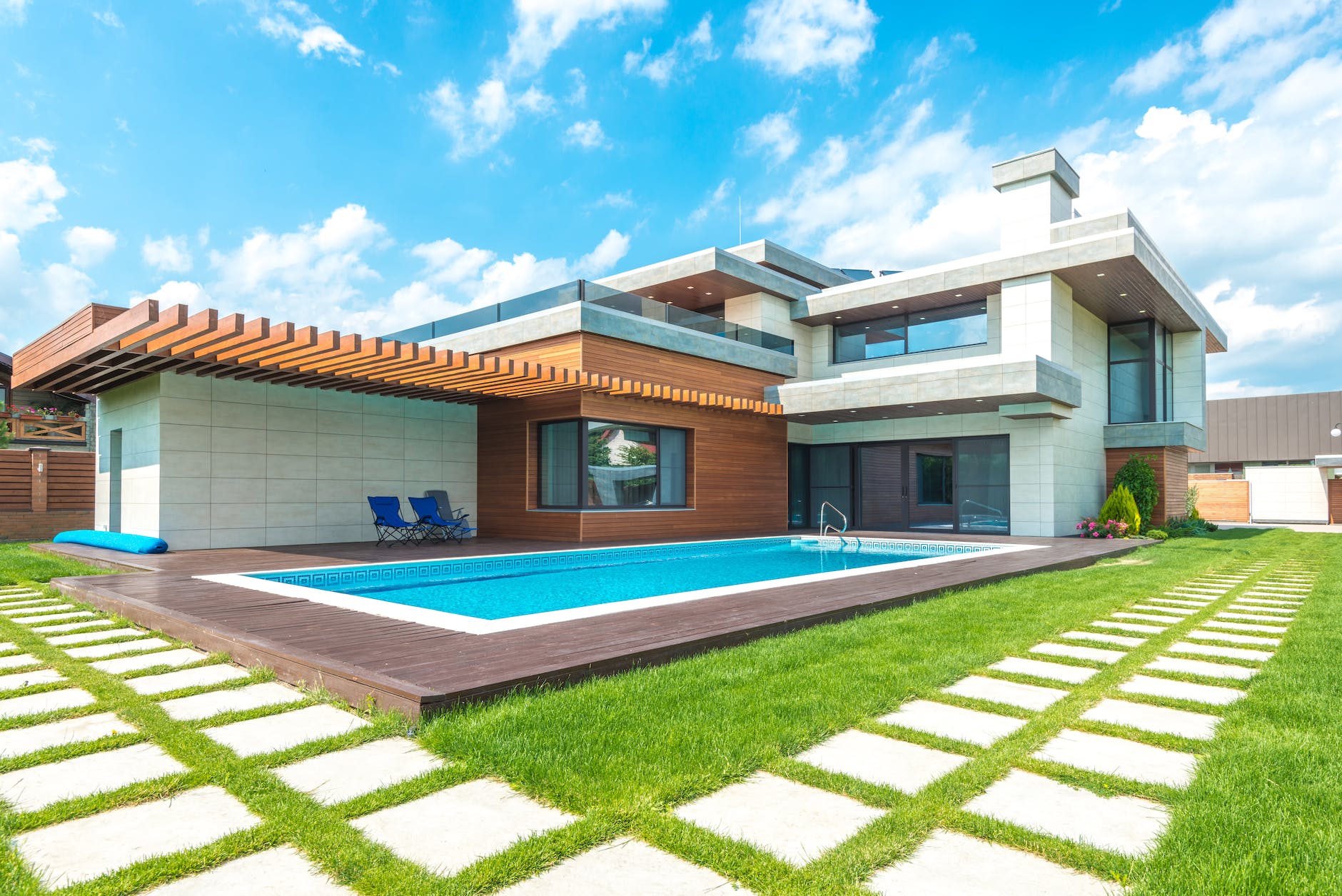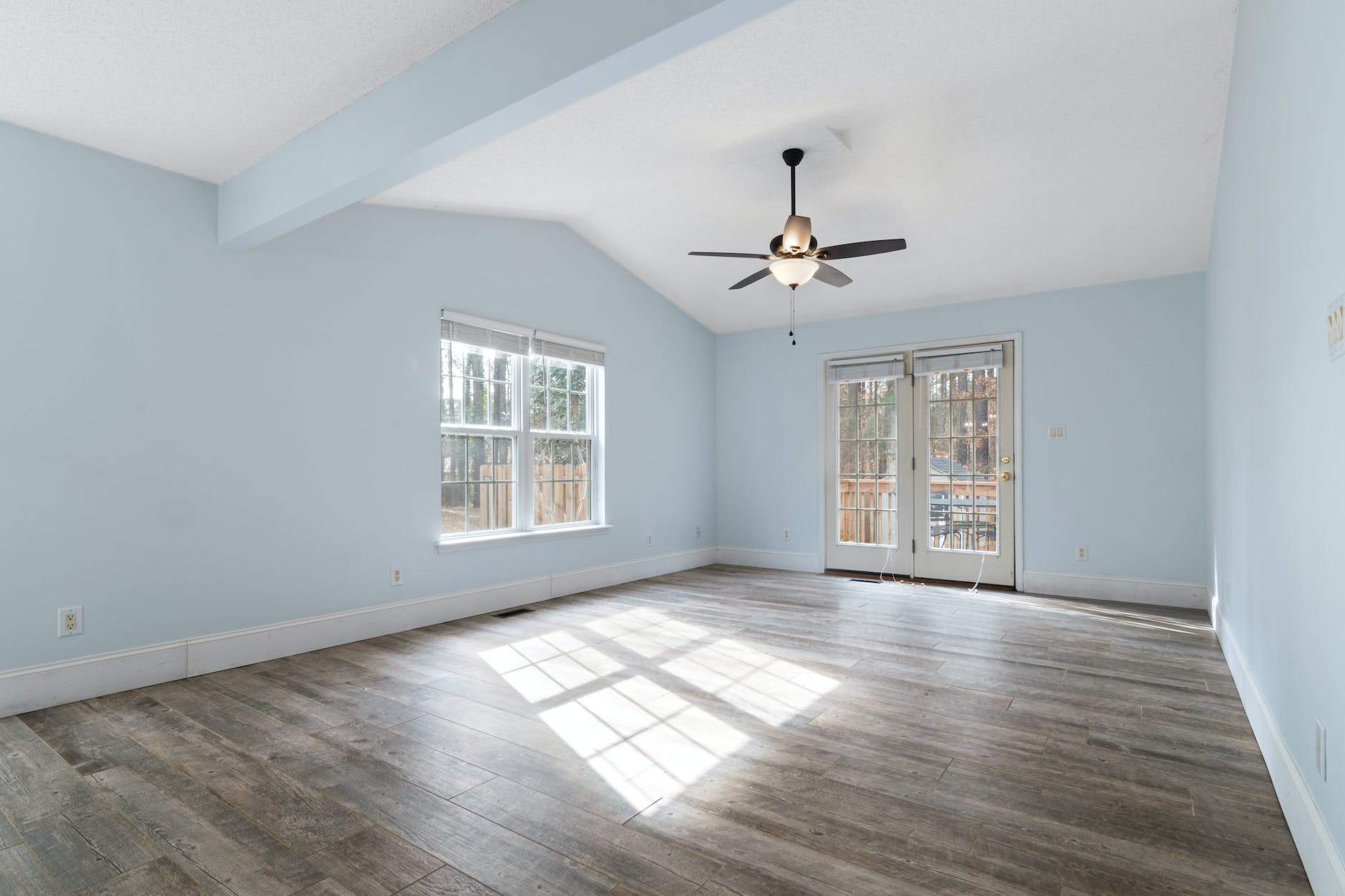Beginners Guides
Low Maintenance Front Yard Landscaping

Having attractive curb appeal is crucial when selling a house, and opting for low maintenance front yard landscaping is a fantastic choice. A survey found that 71% of potential homebuyers value a property’s curb appeal. This landscaping option is not only easier to maintain compared to traditional landscaping, but it can also enhance the beauty of the home.
Succulents
Succulents are low-maintenance plants that thrive in the Southern California climate. They can be used to create an elegant sidewalk garden, providing year-round visual interest and seasonal blooms. Succulents can also be used to create an eye-catching vertical living wall. These plants can be planted in a sunny location and require little to no maintenance.
Succulents come in a variety of sizes, shapes, and colours. They can be small, spherical rosettes, or even in a statuesque columnar form. They are known for their sculptural silhouettes and luminous colors. Their low water needs mean that they can be easily maintained and are perfect for beginners. They can be grown in pots, and only require watering every week.
For a lush, vibrant landscape, succulents are a wonderful choice. They require minimal maintenance and are drought tolerant. They pair well with other plants and trees, and can enhance the look of an otherwise plain yard. Succulents also make an attractive addition to any patio or walkway.
Succulents grow best in well-drained soil. They can also be grown in rock gardens. However, you must carefully mix the soil to create the best drainage mix. This can be achieved with a bit of trial and error, but try to incorporate some organic matter and coarse drainage material. You can use sand, pumice, or crushed granite to achieve this.
Periwinkles
Periwinkles are low maintenance plants that thrive in areas of shade. This lilac-blue plant produces elegant white or blue flowers throughout the year. Its sprawling habit makes it perfect for areas of low maintenance front yard landscaping. Periwinkles are also great for areas where grass doesn’t grow well. A little fertilizer and peat moss will help them spread quickly.
Periwinkles are low maintenance plants that require little care and add a striking pop of color to your garden. Periwinkles are perennials and can tolerate a range of soil conditions. They can also suppress weeds. They are very hardy and resistant to deer.
Periwinkles grow best in partial shade and are best when planted at least 12 inches apart. Their sprawling roots help them anchor soil. However, they may burn if grown in full sunlight. You can plant the vines between rocks or big stones. Periwinkles also make for a beautiful groundcover when used in conjunction with other plants.
Yew shrubs
Yew shrubs are among the most beautiful and low-maintenance trees for landscaping front yards. The yew shrub is also known as the English yew, and it has a low-growing shape. Its glossy green leaves are soft and needle-like.
The Japanese yew is another great choice for low-maintenance front yard landscaping. This plant is hardy in zones 6 through nine. Its leaves are attractive and captivating even during winter. It also needs full sun but can thrive in a partly shaded location. It can also be pruned to shape into a small tree or hedge.
Taxus x media ‘Citation’ is a compact columnar yew. Its dense needle foliage is attractive to both humans and animals. It can tolerate pruning at any time of the year and grows to three to six feet wide. It is also an ideal choice for privacy screening.
Adding low maintenance landscaping plants to your front yard is an excellent way to create a welcoming front yard. Not only will your visitors love the fragrant leaves of Yew shrubs, but they will also keep insects away. The aroma of this fragrant shrub also helps relieve emotional stress.
Indian hawthorn
The Indian hawthorn is an attractive low-maintenance shrub that can be found in a wide range of colors and shapes. This flowering shrub is native to the temperate and subtropical regions of Eastern Asia. Its flowers are white to pink and have many stamens. The blooms last until fall. The leaves of the Indian hawthorn are leathery and evergreen. It grows three to four feet tall and six to eight feet wide. It can thrive in USDA hardiness zones seven through 11 and is also drought and pollution resistant.
This shrub is low maintenance, but you must take some care to make sure it receives ample water and keeps the soil evenly moist. The Indian hawthorn prefers a sunny location with well-drained soil. It does well in full sun, but is tolerant of part shade as well. However, too much shade can result in leggy growth and poor flowering. In addition, too much shade can also lead to fungal diseases.
While Indian hawthorn is a great choice for front yard landscaping, be sure to choose healthy specimens to avoid infestation problems. Check the leaves for spots or other signs of disease before buying or planting them. Also, it’s best to plant them individually, rather than in monocultures, as it will be easier to treat individual plants if a disease or insect infestation occurs.
Wintercreeper
Wintercreeper is a low-maintenance plant that can be planted in most climates. It has evergreen foliage and is hardy in USDA hardiness zones four through nine. This shrub won’t lose its leaves in winter, and its bright yellow foliage adds color and interest to your garden even during cold weather.
This ground cover plant grows 10 inches tall and forms a thick mat. It suppresses weeds and helps keep soil temperatures cool. It can grow in untrimmed planting beds or be pruned into a mound shape. Its main downside is its invasiveness; it can interfere with trees, shrubs, and other plants that have no place for it. As such, it is important to know if this ground cover is suitable for your climate.
Wintercreeper is a low-maintenance tree that can look beautiful in your front yard. The plant is a good choice if you are unsure of the kind of tree to choose for your landscaping. The emerald-gaiety wintercreeper is a beautiful choice.
Groundcover plants
Groundcover plants are a wonderful way to add color to your front yard while keeping pesky weeds and erosion to a minimum. They also help protect the soil from rapid evaporation of moisture. One plant that has numerous uses is creeping thyme, also known as the mother of thyme. This evergreen dwarf plant is an excellent ground cover plant. They are drought tolerant and spread well.
Another groundcover plant with a low-maintenance requirement is the bloody cranesbill. This plant has bright red flowers in the fall, and is a wonderful low-maintenance groundcover. It spreads slowly and forms broad swaths. To add texture to your groundcover plant mix, you can also use low-growing ornamental grasses. Golden moneywort, also known as creeping Jenny, is another excellent choice. It grows in partial shade and full sun and produces mats of tiny, chartreuse leaves.
Ground cover plants can be used in a variety of applications, including filling containers and creating borders. However, you should carefully consider where to plant these plants. Because they grow low to the ground, they are susceptible to damage from wheeled vehicles and foot traffic. However, if you plan ahead, you can prevent any damage to your plants.
Automatic watering system
To make watering the front yard landscape easier, you can use an automatic watering system. Many of these systems include a rain sensor and can even adjust on a monthly or seasonal basis. Installing these systems is easy, and can save you a lot of time. However, you should be aware of some important maintenance guidelines.
First, you need to identify the types of plants and the amount of water they need. Some plants, such as grass, require more water than others. If you have new shrubs, they may need additional water in their first year. If you have any doubts, you should consult an irrigation professional. A few homeowners have tried to install their own irrigation systems without a professional’s help and ended up spending twice as much money fixing problems.
Another important consideration is the amount of water each zone needs. Too much water will lead to runoff and can lead to root disease. Having an irrigation system in place will allow the right amount of water to flow without damaging the soil ecosystem. A dry lawn is more susceptible to erosion and will become dusty, carrying valuable nutrients away with it.
- About the Author
- Latest Posts
Meet Bethia, the visionary designer at ByRetreat who brings a touch of magic to every remote workspace she creates. With a boundless imagination and an eye for beauty, Bethia is passionate about transforming ordinary spaces into extraordinary havens of creativity and comfort.
Bethia possesses a unique talent for envisioning the perfect combination of furniture, colors, and textures that harmonize seamlessly in a room. She understands that selecting furniture goes beyond mere functionality; it’s about curating pieces that evoke a sense of style and sophistication while enhancing the overall ambiance.
Beginners Guides
Ceiling Fans For Your Patio

Ceiling fans are a great addition to your patio. You can use these fans both indoors and outdoors. They are quiet and easy to install. These fans will help keep you cool and comfortable during the hot summer months. Regardless of the size of your patio, a fan can create a warm and cozy atmosphere.
Ceiling fans that can withstand water
When choosing a ceiling fan, it is important to choose one that can be used in damp areas. This will provide the greatest protection against moisture. Ceiling fans with wet ratings can be found in many finishes and designs. These ceiling fans are a wonderful addition to any indoor or outdoor area.
Trifecte Outdoor Ceiling fan is an excellent choice. It has a reversible motor that turns warm air into winter. The fan’s speed can be controlled via a voice-controlled app. Easy to install this outdoor ceiling fan.
Ceiling fans with a wet rating have better sealing and can be used where they are exposed. These ceiling fans can be used in outdoor spaces with no roofs such as patios.
They are also quieter
Outdoor ceiling fans have a quieter operation than indoor fans. However, they can be used outside on a patio, porch, or terrace. Noise level will be affected by the size and shape outdoor fans. For small spaces, fans with 52-inch blades work best. For larger outdoor spaces, fans with longer blades might be required. Outdoor ceiling fans must be waterproof- and damp-rated. High-end ceiling fans can be used to add decoration to your outdoor space. These ceiling fans’ motors and blades can be made of the same materials as indoor fans.
When selecting a ceiling fan, you should consider how big your patio is. Your patio will be noisy if the fan is too big. Large fans can increase airflow but are more loud. For larger areas, it is recommended that at least two ceiling fan be installed.
They are easy to install
Ceiling fans are great for increasing light and air circulation in your patio. You have two choices: low-voltage models that can be installed quickly or high-end, elegant models. Outdoor ceiling fans offer many benefits. It’s not only beautiful, but also practical.
It is important to select the right fan for your patio. You should look for one that has damp-proof motors and can withstand all weather conditions. It should also be able to withstand rain, ice, and salty ocean breezes. Choose one with a damp resistance rating to prevent rusting.
The most popular outdoor ceiling fans are those with five to four blades. A fan can have up to 15 blades. Too many blades can cause excessive wind.
These are easy to assemble
A ceiling fan can be a wonderful addition to your patio. You can easily assemble it and take it apart for cleaning and maintenance. These fixtures are simple to put together and great for DIY projects. There are many sizes and styles available. Many fixtures come with mounting brackets.
There are many choices for outdoor ceiling fan. There are models that resist rusting and humidity-related corrosion as well as models that match your style. Many models are simple to install and waterproof. These models are great for outdoor spaces.
Ceiling fans with outdoor blades typically have five to four blades. Some blades are stronger than others. The fan’s airflow depends on several factors such as blade pitch, blade span and distance from the floor. Smaller fans will work well in smaller spaces while larger fans may blow too much. Outdoor ceiling fans can circulate air over a greater area.
- About the Author
- Latest Posts
Introducing Charles, the Editor in Chief at ByRetreat, whose passion for interior design and editorial excellence elevates every remote workspace to new heights. With his keen eye for detail, impeccable taste, and expertise in design, Charles brings a wealth of knowledge and creativity to the ByRetreat team.
As the Editor in Chief of a renowned lifestyle blog, Charles has honed his skills in curating captivating content and staying up-to-date with the latest trends in interior design. His deep understanding of aesthetics and the power of storytelling through design enables him to create remote workspaces that are not only visually stunning but also rich in personality and meaning.
Beginners Guides
How Long Should Ceiling Fans Run?

If you have ever asked yourself about the ideal running time for your ceiling fan, the answer is eight hours. If you are planning to go out of town, feel free to leave the fan on for a longer period. Just remember to turn it off when you come back home to allow the motor to rest.
Ceiling fans of low quality
You want to make sure that you buy a ceiling fan made from high-quality materials. Low-quality fans are more likely to heat up and consume more electricity. These fans may not be as well-constructed as those of higher quality. Low-quality fans might have poor design or wiring.
The speed of the fan is also important. The fan will move more air if it is running at a higher speed. Lower speeds produce less noise.
Motors of low quality
The motor is one factor that will determine how long ceiling fans should run. Although DC motors are not as common today as they were in the 1970s, they still exist in high-end fans. Stack motors are motors that use two or more shafts. The fan motor has one shaft and the second is attached to it.
Ceiling fans with better motors will last more and offer better air circulation. But make sure you don’t place too much stress on your motor. To ensure adequate ventilation, they should be quieter and run at lower speeds. The pitch of the blades is another important aspect. The fan won’t last as long if the blades don’t move air properly if they aren’t angled correctly.
Blades of low quality
The longevity of a ceiling fan is directly affected by the quality of its blades. Materials used for blade construction are also important. Low-quality fans may cause the blades to warp and soften if they are not protected from moisture.
To avoid damage or warping, the blades must be properly tightened. The blades may wear out faster if they are not tightened properly. Also, poorly installed blades can cause structural problems.
Inefficient motors
The amount of air that the fans move determines the efficiency of ceiling fan. This is a measure of the fan’s overall performance. It is often expressed in m3/min/W. Inefficient motors use more energy to create the same amount as air movement as efficient fans.
The motor’s rated power is approximately seventy-four to eighty-six per cent. This power is needed to turn fan props. The fan speed will increase, which means that the power required to turn the props increases.
Overheating ceiling fans
A ceiling fan can heat up and become unbearably hot. This can cause serious damage to the machine and its internal components. Overheating is most commonly caused by dirty bearings, faulty wiring, or imbalanced blades. You should contact professionals if you suspect that your ceiling fan may be overheating.
Dust buildup on the blades is another common reason for overheating. Dust can build up in the vortex formed by airflow as the fan spins and become stuck in the bearings. The fan will draw more power and become more difficult to operate. It is therefore important to clean your ceiling fan regularly and get rid of any debris.
Ceiling fan maintenance costs
The power consumption of a ceiling fan will affect the cost. To calculate the electricity consumption for a specific fan, multiply the wattage with hours. Electricity is usually charged by the kilowatt hour (kWh) in most states. This will give you an estimate for how much electricity your ceiling fans will consume over a given time period. Hawaii has the highest electricity tariff while Washington and Louisiana have both the lowest. These states have a 9.6 kWh cost for a ceiling fan.
Although it is not a significant portion of your monthly energy bill, the cost of running a ceiling fans can be a substantial part of it. If the ceiling fan is not turned off, it can add about five dollars to your monthly electric bill. The cost of four ceiling fans can add up to $25 per month.
- About the Author
- Latest Posts
Introducing Charles, the Editor in Chief at ByRetreat, whose passion for interior design and editorial excellence elevates every remote workspace to new heights. With his keen eye for detail, impeccable taste, and expertise in design, Charles brings a wealth of knowledge and creativity to the ByRetreat team.
As the Editor in Chief of a renowned lifestyle blog, Charles has honed his skills in curating captivating content and staying up-to-date with the latest trends in interior design. His deep understanding of aesthetics and the power of storytelling through design enables him to create remote workspaces that are not only visually stunning but also rich in personality and meaning.
Beginners Guides
Can You Use a Ceiling Fan Instead of a Range Hood?

If you are on a tight budget, consider using a ceiling fan instead of a range hood. Ceiling fans provide similar cooling benefits without the noise or mess associated with range hoods. While ceiling fans may be less expensive than range hoods, it is important to consider their design and noise levels before making a purchase.
Selecting a range of hoods
Before you can choose the right range hood with ceiling fan, it is important to determine how much space it will take up. The hood’s size can be determined by measuring the area between the cabinets and the cooking surface. You should also decide how high you want the hood. The size of your kitchen ventilation system is critical.
The range hood’s style and material should be in harmony with your kitchen design. It is important to choose an easy-to-clean product. You should look for one with a fully enclosed bottom and easy-to-remove filters. Also, look out for integrated buttons and heat sensors, as well as a powerful motor. You should also consider the style and color of your kitchen in relation to it.
You may consider switching to a lower-efficiency model if the range hood’s noise level is too loud for you. Low-efficiency models will produce a loud exhaust sound, which can prevent you from using them. You can test it in a showroom if you aren’t sure of the sound level. The quieter models will be those with lower decibels.
Choose a ceiling fan over a range hood
Consider your cooking style when choosing between a ceiling fan and a rangehood. Consider factors like the CFM (cubic feet of airflow per minute), fan speed, and noise level. CFM is a measure of how fast the fan will vent. A fan that has two speeds and emits a level of noise that corresponds to your preferred level is a good choice.
It is usually easier to install a range hood in a single-family home than it is in an apartment. Apartment buildings often don’t have access to the outdoors. An external range hood would not work efficiently without a vent. Some condos and historic buildings may not allow for their installation. You should instead install a ceiling fan in such instances.
A ducted rangehood can be a great choice if you already have a kitchen duct system. The ductless hood can be programmed to turn the hood on or off as needed. It is also more flexible because it doesn’t attach to your kitchen ceiling. Ductless models can produce higher decibel levels and require more fan power.
Choose a ductless rangehood
Ductless range hoods offer many advantages over traditional designs when it comes to selecting a range hood. These models don’t use ducts, and instead recirculate the air through charcoal filters. This type of hood is also simpler to install. The old hood can be removed from the wall and the wires connected to it can then be attached to the new one. To secure the unit, you can use drywall anchors.
Ductless rangehoods are usually made from stainless steel or aluminium. These materials are typically more expensive than plastic. These filters can also be used to filter different materials, like aluminum and charcoal. Although charcoal filters are more effective at collecting smoke and particles, they will need to be replaced every three to six month.
There are many styles and sizes of ductless range hoods. The Broan 413004 is an excellent range hood. However, the Cosmo 5MU30 is sleek and extremely efficient.
Wall-mounted range hoods
When choosing a wall-mounted rangehood, there are many things you should consider. Noise level is the first. These appliances can be very loud when they are in use. The decibels are used to measure the noise level. 60 decibels is the noise level for a normal conversation at 3 feet. You might choose a hood with less noise depending on what type of cooking you do and how big your kitchen is.
The size of the range hood that you choose for your wall mount is another important consideration. The hood should be the right size for the space. It will be difficult for the hood to fit over the stove if it is too small. The hood should cover at least half of the cooking surface.
A wall-mounted rangehood’s CFM rating (cubic feet per minute) is another important aspect. A machine with a high CFM rating will be able to remove most of the cooking smells and heat.
- About the Author
- Latest Posts
Introducing Ron, the home decor aficionado at ByRetreat, whose passion for creating beautiful and inviting spaces is at the heart of his work. With his deep knowledge of home decor and his innate sense of style, Ron brings a wealth of expertise and a keen eye for detail to the ByRetreat team.
Ron’s love for home decor goes beyond aesthetics; he understands that our surroundings play a significant role in our overall well-being and productivity. With this in mind, Ron is dedicated to transforming remote workspaces into havens of comfort, functionality, and beauty.
-

 Vetted3 days ago
Vetted3 days ago15 Best Boxwood Varieties for Thriving in Full Sunlight
-

 Vetted6 days ago
Vetted6 days ago15 Best Ways to Label Clothes for Nursing Home Residents – Stay Organized and Efficient
-

 Vetted4 days ago
Vetted4 days ago15 Best Dryer Vent Hoses to Keep Your Laundry Room Safe and Efficient
-

 Vetted4 days ago
Vetted4 days ago15 Best Spider Sprays to Keep Your Home Arachnid-Free
-

 Vetted3 days ago
Vetted3 days ago14 Best Cleaners for Aluminum Surfaces – Shine Bright Like a Diamond
-

 Vetted4 days ago
Vetted4 days ago15 Best Nightstand Charging Stations to Keep Your Devices Organized and Ready to Go
-

 Beginners Guides2 days ago
Beginners Guides2 days agoHow to Slow Down My Ceiling Fan to Reduce Wind Chill
-

 Beginners Guides16 hours ago
Beginners Guides16 hours agoCan You Use a Ceiling Fan Instead of a Range Hood?






























